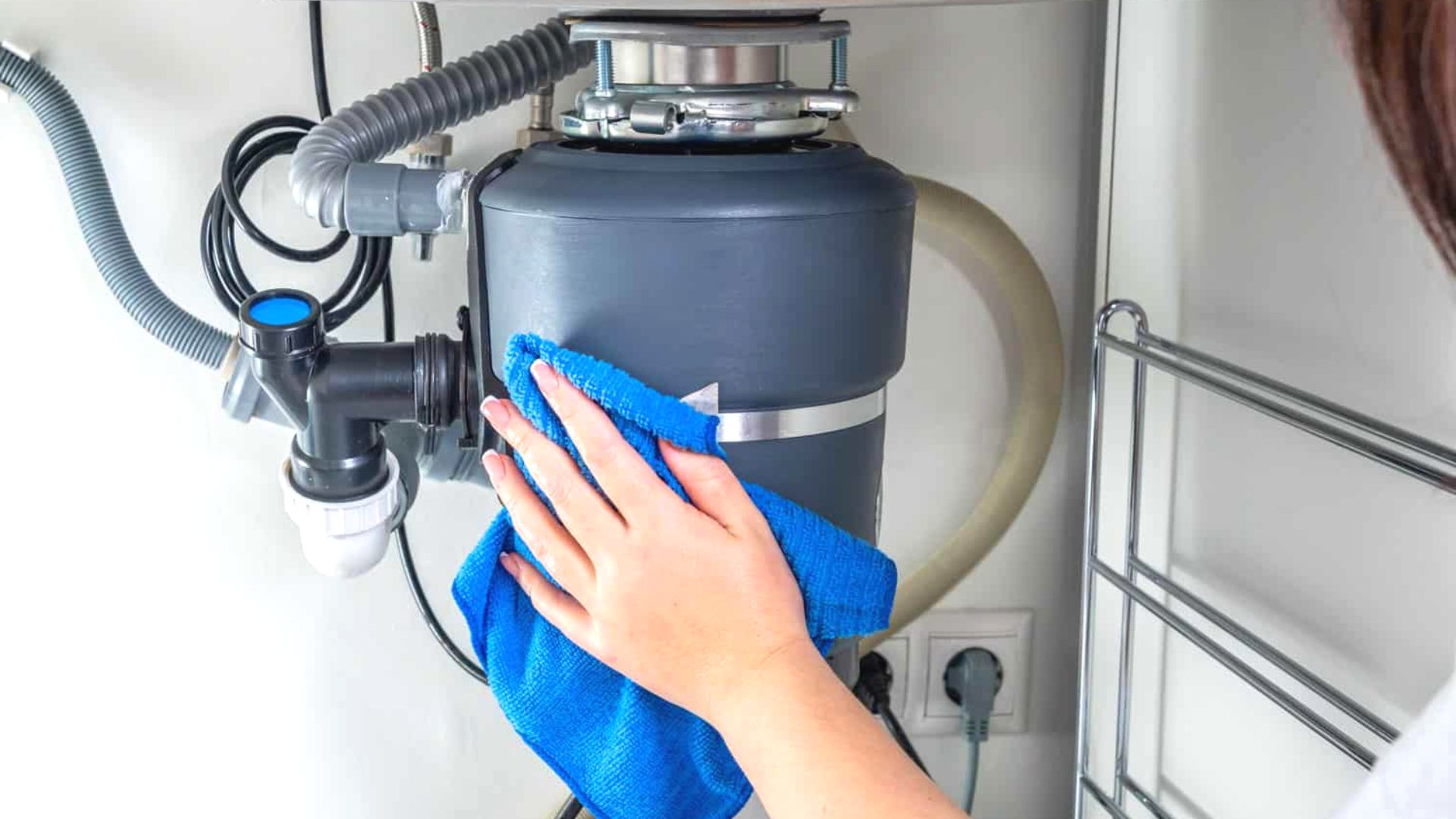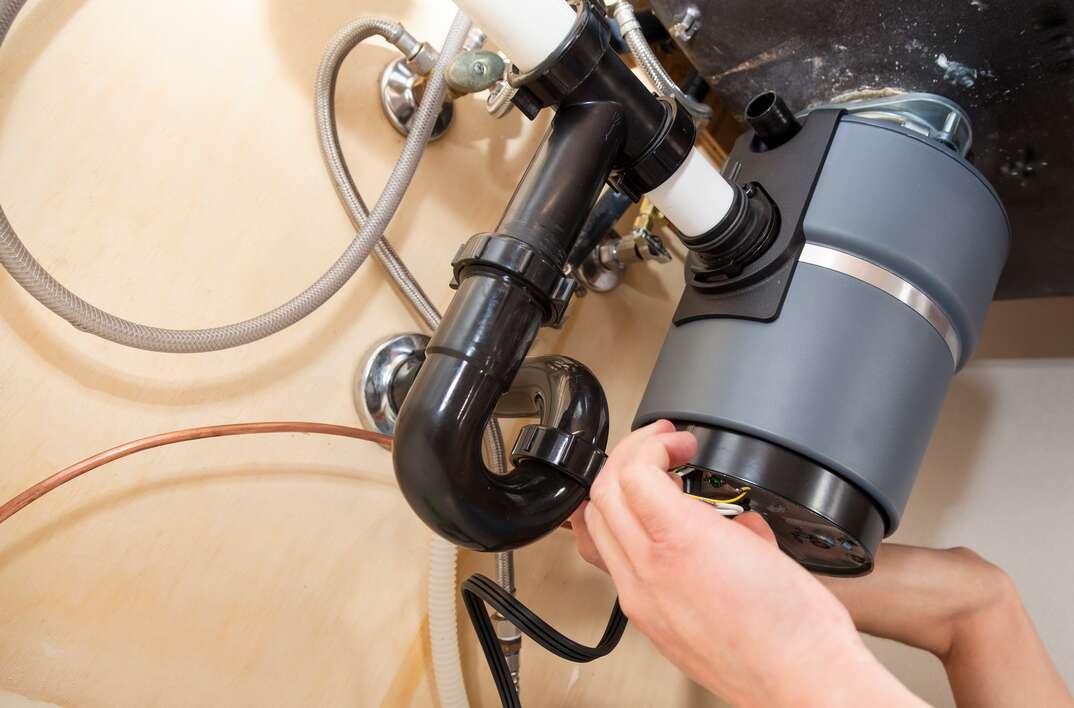This great article down below involving Tips on Fixing a Leaking Garbage Disposal is amazingly compelling. Give it a go and make your own assumptions.

Garbage disposals are vital cooking area devices that assist in throwing away food waste successfully. Nevertheless, a dripping waste disposal unit can be an irritating and messy issue to handle. Thankfully, numerous leakages can be repaired easily with a few simple steps. In this post, we will certainly review how to take care of a dripping waste disposal unit efficiently.
Introduction
Garbage disposals are set up under cooking area sinks and are developed to shred food waste into smaller sized pieces, enabling it to travel through the pipes system easily. While these devices are generally trusted, leaks can occur in time due to wear and tear, loosened links, or damage to the unit.
Step-by-Step Overview to Repairing a Leaking Waste Disposal Unit
Turn Off the Power
Prior to attempting any type of fixings, guarantee that the power to the garbage disposal unit is shut off to prevent the danger of electric shock.
Find the Leak
Identify the exact location of the leakage and identify the cause
Tighten Links
Utilize a wrench to tighten up any loose links in between the disposal system and the plumbing system.
Change Seals or Gaskets
If the leak is because of worn seals or gaskets, remove the old components and change them with new ones.
Patching Splits or Holes
For cracks or openings in the disposal system, usage epoxy or a suitable patching product to secure the damaged location.
Recognizing the Resource of the Leakage
Before trying to take care of a leaking waste disposal unit, it is important to recognize the resource of the leak. This can generally be done with visual evaluation or by carrying out straightforward tests.
Visual Examination
Evaluate the waste disposal unit device thoroughly for any type of indicators of water leakage. Pay attention to areas around seals, gaskets, and link factors.
Testing for Leaks
One way to evaluate for leakages is by running water via the disposal system and looking for any kind of noticeable indications of leakage.
Common Sources Of Leaks in Waste Disposals
Worn Seals and Gaskets
Seals and gaskets play a vital function in preventing water from leaking out of the garbage disposal. In time, these components can deteriorate, resulting in leakages around the disposal device.
Loose Connections
The connections between the garbage disposal and the pipes system can come to be loose with time, creating water to leakage out during procedure.
Splits or Holes in the Disposal Device
Physical damages to the garbage disposal, such as fractures or openings in the housing, can likewise lead to leaks.
Tools and Materials Needed for Taking Care Of a Dripping Garbage Disposal
Prior to starting the repair work process, gather the required devices and materials, including a screwdriver, adjustable wrench, plumbing professional's putty, replacement seals or gaskets, and epoxy or patching product for repairing cracks or holes.
Testing the Waste Disposal Unit After Repair Service
When the fixing is complete, test the garbage disposal by running water through it to make certain that the leakage has actually been dealt with.
Preventive Upkeep Tips to Prevent Future Leaks
To stop future leaks, it is necessary to perform normal maintenance on your garbage disposal. This consists of maintaining it clean, preventing putting non-food products or tough items down the disposal, and regularly looking for leakages or other concerns.
Final thought
Finally, repairing a leaking waste disposal unit is a reasonably straightforward process that can be finished with fundamental devices and materials. By adhering to the actions outlined in this short article and exercising precautionary upkeep, you can maintain your garbage disposal in good working condition and stay clear of expensive repairs in the future.
What to Do About a Leaking Garbage Disposal
A leaking garbage disposal often goes unnoticed until you confront a sopping cabinet, a foul-smelling puddle, or an audible drip-drip-drip from the unit. The fix can be frustrating, too, because the leak can stem from a number of components in the system. Fortunately, with a little sleuthing, you can zero in on the leak and—depending on the exact location—stop the icky oozing and repair the component that caused it. Worst case scenario, if it turns out that the garbage disposal must be replaced, installing a new one is a reasonable do-it-yourself task for those with basic plumbing skills. Read on to keep the cash you’d otherwise hand over to a pro.
Prepare to find the leak
Prior to testing the garbage disposal for leaks, unplug it at the wall outlet and turn off the power from the breaker box to prevent electrical shock. Then insert a watertight sink stopper into your sink drain and wipe the unit dry with a clean cloth. In any handy container, mix a few drops of food coloring into a few cups of water, and pour the dyed water onto the sink stopper to help you locate the leak.
Investigate the source
the top, where the disposal meets the sink drain the side, where the dishwasher hose or main drain pipe connects to the disposal or the bottom of the unit Inspect each of these locations while gliding a light-colored rag over the unit; the dyed water will readily show on the rag and reveal the location of the leak. If a leak isn’t immediately apparent, remove the sink stopper and pour a few more cups of dyed water down the sink drain, then check for leaks again. Leaks near the top of the unit are more likely to show themselves while the sink is plugged, while side and bottom leaks are more noticeable while the sink is unplugged.
The metal sink flange that sits directly inside the sink drain is typically sealed around the top with plumber’s putty (a clay-like sealant) and then secured from under the sink with bolts. If the plumber’s putty deteriorates, or the bolts loosen, the flange can no longer form a watertight seal between the sink drain and the disposal—which could cause a leak at the top of the unit.
To reseal the leaky flange, you must first detach the garbage disposal. Start by loosening the screws securing the main drain pipe to the disposal, then loosen the screws in the metal clamp securing the dishwasher hose to the disposal and detach the drain pipe and dishwasher hose from the disposal. Loosen the screws in the mounting ring that connects the disposal to the metal mounting assembly beneath the sink, then pull down the disposal and carefully set it on a clean, dry surface. Loosen the bolts in the mounting assembly with a wrench, then pull down the mounting assembly and set it near the disposal.

We are very inquisitive about Tips on Fixing a Leaking Garbage Disposal and I really hope you appreciated the entire blog post. Do you know about somebody who is excited by the topic? Why not promote it. We truly appreciate reading our article about How to fix a pretty consistent leak from my garbage disposal.
Call Today